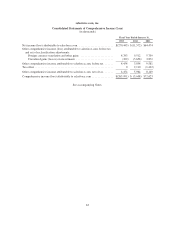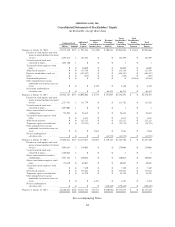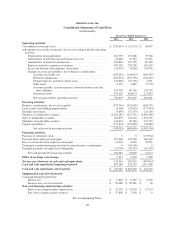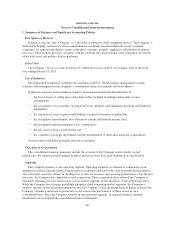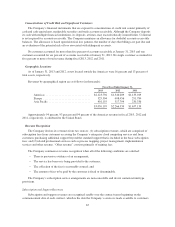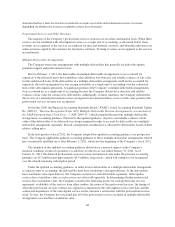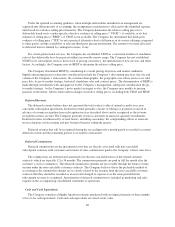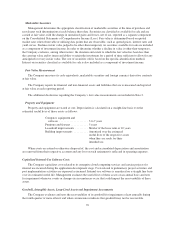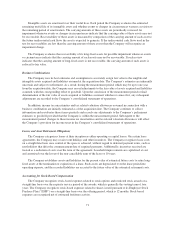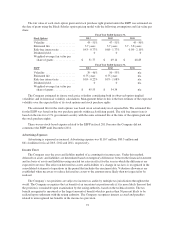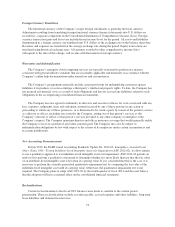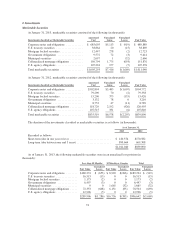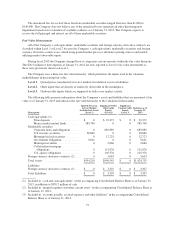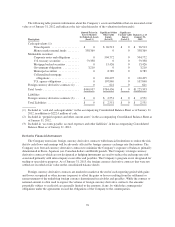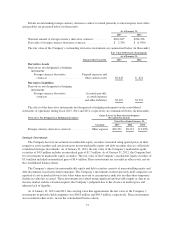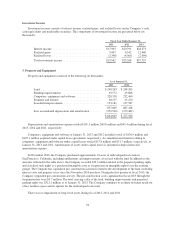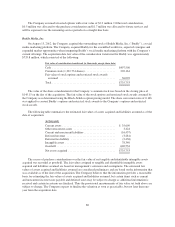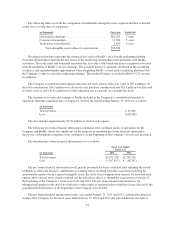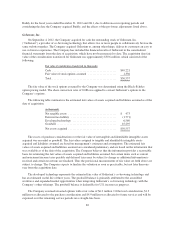Salesforce.com 2013 Annual Report Download - page 77
Download and view the complete annual report
Please find page 77 of the 2013 Salesforce.com annual report below. You can navigate through the pages in the report by either clicking on the pages listed below, or by using the keyword search tool below to find specific information within the annual report.Foreign Currency Translation
The functional currency of the Company’s major foreign subsidiaries is generally the local currency.
Adjustments resulting from translating foreign functional currency financial statements into U.S. dollars are
recorded as a separate component on the Consolidated Statements of Comprehensive Income (Loss). Foreign
currency transaction gains and losses are included in net income (loss) for the period. All assets and liabilities
denominated in a foreign currency are translated into U.S. dollars at the exchange rate on the balance sheet date.
Revenues and expenses are translated at the average exchange rate during the period. Equity transactions are
translated using historical exchange rates. All amounts recorded to other comprehensive income (loss)
subsequent to the date of this change, will revalue with fluctuations in foreign currency.
Warranties and Indemnification
The Company’s enterprise cloud computing services are typically warranted to perform in a manner
consistent with general industry standards that are reasonably applicable and materially in accordance with the
Company’s online help documentation under normal use and circumstances.
The Company’s arrangements generally include certain provisions for indemnifying customers against
liabilities if its products or services infringe a third-party’s intellectual property rights. To date, the Company has
not incurred any material costs as a result of such obligations and has not accrued any liabilities related to such
obligations in the accompanying consolidated financial statements.
The Company has also agreed to indemnify its directors and executive officers for costs associated with any
fees, expenses, judgments, fines and settlement amounts incurred by any of these persons in any action or
proceeding to which any of those persons is, or is threatened to be, made a party by reason of the person’s service
as a director or officer, including any action by the Company, arising out of that person’s services as the
Company’s director or officer or that person’s services provided to any other company or enterprise at the
Company’s request. The Company maintains director and officer insurance coverage that would generally enable
the Company to recover a portion of any future amounts paid. The Company may also be subject to
indemnification obligations by law with respect to the actions of its employees under certain circumstances and
in certain jurisdictions.
New Accounting Pronouncement
In July 2012, the FASB issued Accounting Standards Update No. 2012-02, Intangibles—Goodwill and
Other (Topic 350)—Testing Indefinite-Lived Intangible Assets for Impairment (ASU 2012-02), to allow entities
to use a qualitative approach to test indefinite-lived intangible assets for impairment. ASU 2012-02 permits an
entity to first perform a qualitative assessment to determine whether it is more likely than not that the fair value
of an indefinite-lived intangible asset is less than its carrying value. If it is concluded that this is the case, it is
necessary to perform the currently prescribed quantitative impairment test by comparing the fair value of the
indefinite-lived intangible asset with its carrying value. Otherwise, the quantitative impairment test is not
required. The Company plans to adopt ASU 2012-02 by the fourth quarter of fiscal 2014 and does not believe
that the adoption will have a material effect on the consolidated financial statements.
Reclassifications
Certain reclassifications to the fiscal 2012 balances were made to conform to the current period
presentation. These reclassifications include accounts payable, accrued expenses and other liabilities, long-term
lease liabilities and deferred income taxes.
73


